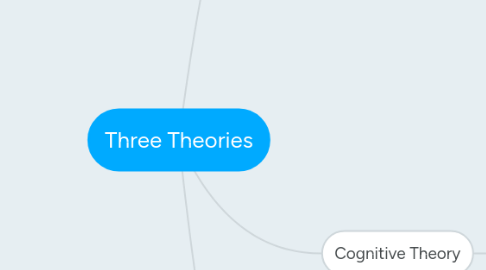
1. Behaviorist Theory
1.1. Oldest theory
1.2. Based on conditioning and shaping behavior through rewards
1.3. Students are able to connect to what is learned and translate it into other learning experiences
1.4. Learning and behavior can be learned by watching those certain behaviors, whether they are positive or negative
1.5. Thorndike
1.5.1. Behavior is influenced by conditions of learning and behaviors can change over time through proper stimuli
1.6. Pavlov-Watson
1.6.1. Conditioning through stimulus-response
1.7. Skinner
1.7.1. Positive or negative rewards for behaviors
1.8. Bandura
1.8.1. Behaviors are best learned through observing and modeling
1.9. Gange
1.9.1. 8 behaviors that help with problem solving
2. Cognitive Theory
2.1. Considers the way a learn applies information
2.2. Learning focuses on the developmental stages of children and the realization that children grow and learn at different rates
2.3. Interest in how people gain and learn information and how thinking is managed
2.4. Focuses on problem solving, creativity and critical thinking
2.5. Montessori
2.5.1. Children learn at different rates
2.6. Piaget
2.6.1. Four stages from a sequence of mental operations
2.7. Vygotsky
2.7.1. Learning involves human and cultural development
2.8. Bruner-Phenix
2.8.1. Learning how things are related, focuses on inquiry and discovery
2.9. Gardner
2.9.1. Cross-cultural learning, focuses on multiple intellegences
2.10. Guilford
2.10.1. Structure of Intellect model
2.11. Ennis-Lipman-Sternberg
2.11.1. Teaches students how to think
3. Humanistic Theory
3.1. Learning focuses on the whole child
3.2. Takes into account learners needs, attitudes and feelings
3.3. Maslow
3.3.1. Hierarchical needs in order to survive
3.4. Rogers
3.4.1. Freedoms of earning and the learner is encouraged to be open and self-accepting
